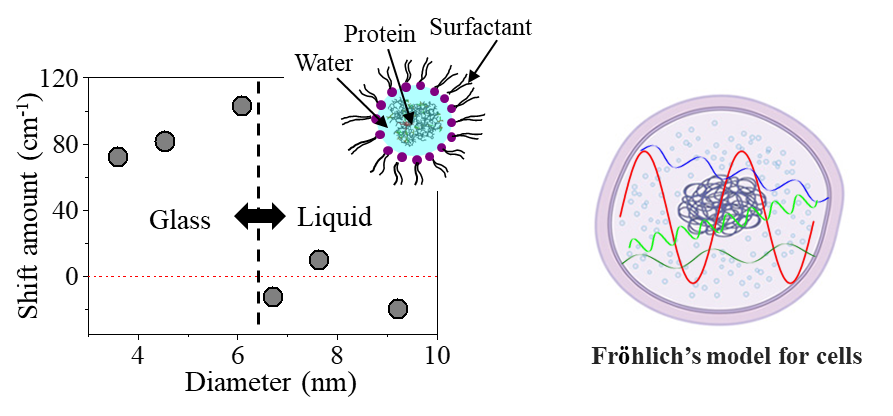FBS Colloquia No.321Photophysics Laboratory
| Seminar or Lecture |
Studies of glass-like state of hydration water at room temperature and Fröhlich’s model for cells using reverse micelles. Hiroshi Murakami [QST, Senior researcher] |
|---|---|
| Date and Time | 18 Apr. 2023 (Tue), 12:15~13:00 |
| Place | 2F Seminar Room, BioSystems Building |
| Language | Japanese |
| Contact |
Junji Watanabe |
Studies of glass-like state of hydration water at room temperature and Fröhlich’s model for cells using reverse micelles.
I will talk about two studies using reverse micelles (RMs). RMs allow us to examine the property of biomolecules in cell-like environments. The first topic is that hydration water surrounding probe molecules in RMs exhibits liquid-glass transition at a certain RM size as the RM size is reduced at room temperature. This implies that biomolecular reactions in cells will be considerably different from those in dilute aqueous solution. Moreover, glassy states of hydration water are thought to be a key factor for organisms suppressing the metabolic activity under extreme environments such as desiccation and low temperatures. I next describe studies for experimental verification of Fröhlich’s model for cells. About half a century ago, he theoretically demonstrated that a coherent polarization wave (frequency: ~0.1 Terahertz) emerges in cells when the metabolic energy exceeds a certain threshold value. The existence of such a polarization wave brings innovation to studies of biological function in cells. However, many studies using cells have never verified the model, and hence, its physical aspect should be first confirmed. To that end, we use RMs with energy input by microwaves instead of metabolic energy. It is found from time-dependent measurements of temperature that the heat production rate of water in the RM under microwave irradiation is more than one order of magnitude larger than that of liquid water. We consider that this unusual heat production may be attributed to non-equilibrium transition like Fröhlich condensation.

